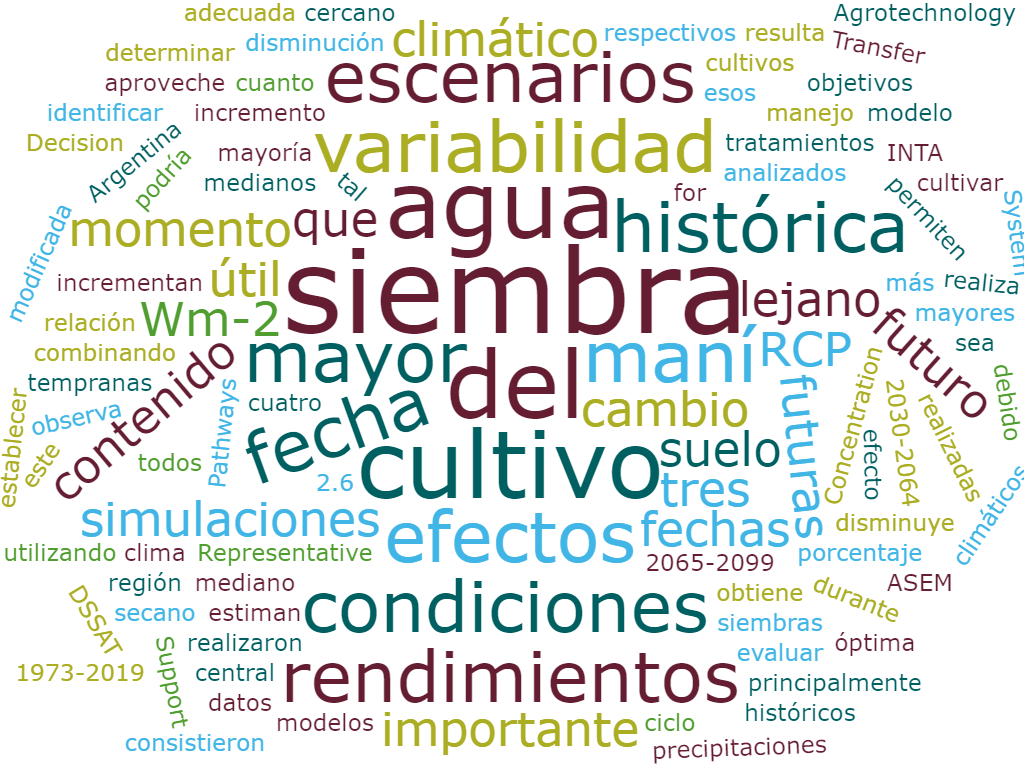Use of the DSSAT-PNUTGRO in Argentina´s central region: evaluations of sowing dates using historical data and climate change scenarios
DOI:
https://doi.org/10.17648/sas.v1i2.74Keywords:
Droughts; RCP; distant futureAbstract
The peanut is an important crop in Argentina´s central region and it is mainly sown in dry land. Thus, it is important to establish an appropriate planting date to take advantage of rainfall during its growth cycle. This date could be even modified due to climate change effects. Crop models allow evaluating the effects of climate, soil and management on crop yield and its variability. The goal of this work was to use the Decision Support System for Agrotechnology Transfer (DSSAT) model to identify an optimal sowing date using historical climate data and determine the climate change effects on peanut yield. To this end, simulations were performed for the ASEM 400 INTA cultivar using historical weather data (1973-2019) and, from the near future (2030-2064) and the distant future (2065-2099) with four Representative Concentration Pathways scenarios (RCP: 2.6, 4.5, 6.0 and 8.5 Wm-2), combining three sowing dates and three conditions of soil water availability at the sowing date. Simulations performed with historical climate data estimate higher yields in earlier sowing dates and, the variability of those yields decrease when there is higher water availability at the sowing date. A decrease in variability with higher soil water content at the sowing date is also observed for future conditions in all the scenarios analyzed. In most future conditions and scenarios, the medium yields increase respect to their treatments with historical weather data. The greatest median increase in peanut yield is obtained in the distant future with a RCP of 8.5 Wm-2 and 70% of water availability at the sowing date.
Downloads

Downloads
Published
How to Cite
Issue
Section
License
Autores concordam com os seguintes termos:
a) Os autores mantêm os direitos autorais e concedem à revista o direito de primeira publicação, com o trabalho simultaneamente licenciado sob a LicençaAttribution-NonCommercial-ShareAlike 4.0 International, que permite o compartilhamento do trabalho com reconhecimento da autoria e publicação inicial na Revista SAS. A licença permite o uso, a distribuição e a reprodução irrestrita, em qualquer meio, desde que devidamente citada a fonte. Essa licença permite também que outros remixem, adaptem e criem a partir do seu trabalho para fins não comerciais, desde que atribuam a você o devido crédito e que licenciem as novas criações sob termos idênticos.
b) Não cabe aos autores compensação financeira a qualquer título, por artigos ou resenhas publicados na South American Sciences.
c) Os conceitos expressos nos artigos publicados na South American Sciences são de inteira responsabilidade de seus autores.








